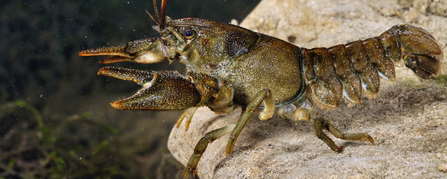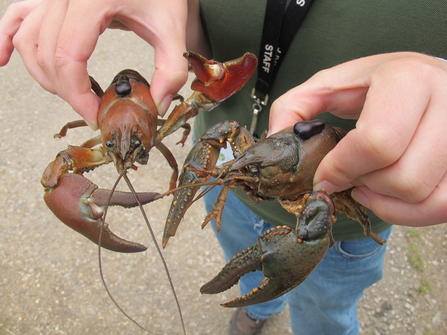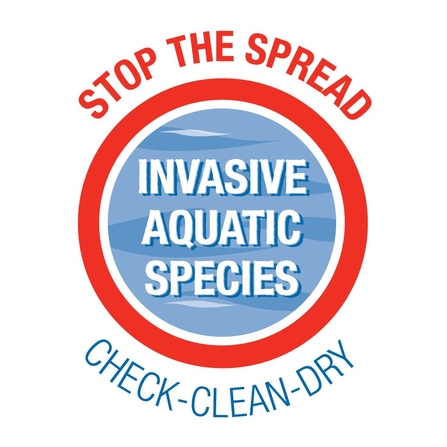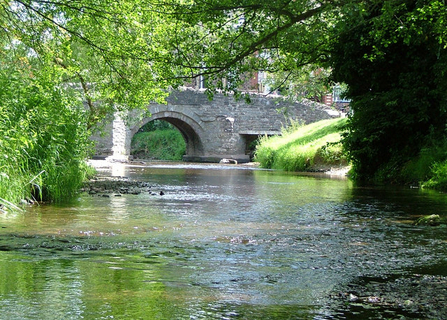Crayfish, often referred to as freshwater lobsters, are one of the most amazing and unworldly creatures found in our rivers, lakes and ponds. There are over 600 species of crayfish worldwide with only the white clawed crayfish being native to the UK.
Found in the Balkan Peninsula, this European freshwater crayfish reaches its northerly limit in the UK where it has the greatest population densities. Although difficult to tell apart from other crayfish, these gentle giants are olive-green to brown in colour and can reach up to 15 centimetres in length. The common name refers to the fact that the undersides of the claws are off-white to pinkish in colour.
Crayfish are mostly nocturnal and are more active and visible during the spring and summer. They mature after 3-4 years and can live up to 12 years in well oxygenated, calcium- rich water. This alone makes them a key indicator species of high water quality. Their ideal habitat is shallow streams and rivers with rocks and crevices that they hide under to avoid predation. Tree roots and vegetation offer shade in hot summers and provide coverage for the day before venturing out at night to feed on plants, small animals and detritus. They live alongside other key invertebrates such as caddis fly larvae, mayfly’s and mollusc species like otters and water vole. Trout and stickleback also occur in the same habitat.





